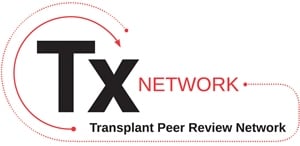Journal list menu
Export Citations
Download PDFs
COVER IMAGE
American Journal of Transplantation: Volume 22, Number 11, November 2022
- First Published: 08 November 2022
On the cover: The biology of deceased donor kidney quality. In this issue, two papers explore the biology of deceased donor kidney quality. He et al. (page 2529) examine age-based differences in the intra-renal immune microenvironment of mouse kidney transplants. The recipient-derived cells that infiltrate aged compared to young allografts exhibit more vigorous effector functions that may be result from the higher expression of Class II and costimulation molecules by donor endothelial and epithelial cells. Notably, transplantation of kidneys from aged mice pre-treated with a senolytic, a drug that induces apoptosis of senescent cells, modulated the profile of graftinfiltrating cells and, notably, improved allograft function. Archer et al. (page 2515) aimed to determine whether the transcriptional profile of back-bench human kidney biopsies can predict post-transplant allograft function. The investigators identified that, prior to transplantation, low functioning grafts showed upregulation of innate and adaptive immune response genes and downregulation of metabolic process genes. Three clinical parameters in combination with 13 differentially expressed genes led to the derivation and validation of a risk calculator for kidney allograft function two years after transplantation. Helantera and Divard (page 2497) delve into study design issues and emphasize the importance of not only finding biomarkers but also demonstrating that they yield clinical benefit. Also: Kidney allocation: Complexity begets inefficiency.
THE AJT REPORT
Safe and Dignified Care for Donor Patients
- Pages: 2493-2494
- First Published: 08 November 2022
This month's installment of “The AJT Report” addresses the ways in which controversial new performance metrics for Organ Procurement Organizations have focused attention on the variability of their performance. Also, the Texas case of a death row inmate requesting to become an organ donor raises ethical questions.
LITERATURE WATCH
Donor commensals abet graft rejection
- Page: 2495
- First Published: 08 November 2022
Host immune response to graft commensals promotes allograft rejection resistant to therapies.
EDITORIALS
Gene expression profiling using deceased donor kidney biopsies to predict graft outcomes—We are not there yet
- Pages: 2497-2498
- First Published: 28 July 2022
This editorial critically reviews the manuscript by Archer (page 2515) which describes the derivation of a risk calculator for post-transplant allograft function by gene expression profiling of deceased donor kidney biopsies.
More is better … until it is worse: Can organ placement processes scale to an increasingly complex system?
- Pages: 2499-2501
- First Published: 11 August 2022
The authors comment on Reddy et al's insights (page 2661) into a single center's experience with the increased number of organ offers after kidney and liver allocation system changes, emphasizing the increased workload, potential outcomes and possible solutions.
MINIREVIEW
Connexins in endothelial cells as a therapeutic target for solid organ transplantation
- Pages: 2502-2508
- First Published: 25 May 2022
This minireview highlights the vital role of connexin gap junction proteins in endothelial cell health and barrier integrity and discusses its importance as a therapeutic target for solid organ transplantation.
PERSONAL VIEWPOINT
A regulated system of incentives for living kidney donation: Clearing the way for an informed assessment
- Pages: 2509-2514
- First Published: 25 June 2022
ORIGINAL ARTICLES
Basic Science
Pretransplant kidney transcriptome captures intrinsic donor organ quality and predicts 24-month outcomes
- Pages: 2515-2528
- First Published: 22 June 2022
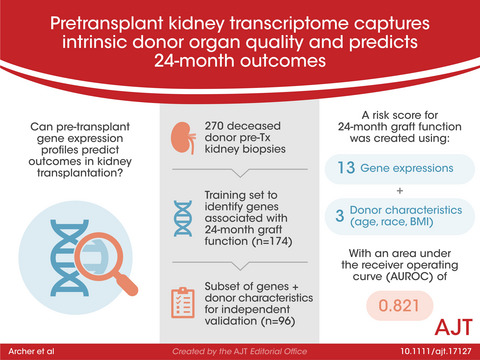
This genome-wide large-cohort study shows that the donor kidney transcriptome prior to implantation captures intrinsic organ quality and carries significant predictive weight for 24-month graft function. See Helanterä and Divard comment on page 2497.
Renal inflamm-aging provokes intra-graft inflammation following experimental kidney transplantation
- Pages: 2529-2547
- First Published: 19 July 2022
Interleukin 24 promotes cell death in renal epithelial cells and is associated with acute renal injury
- Pages: 2548-2559
- First Published: 08 July 2022
In vitro and in vivo study shows that, during kidney ischemia / reperfusion injury, interleukin 24 induces apoptosis and endoplasmic reticulum stress in renal tubular epithelial cells, leading to acute kidney injury.
Elevated cell-free DNA in respiratory viral infection and associated lung allograft dysfunction
- Pages: 2560-2570
- First Published: 21 June 2022
Among lung transplant recipients, increased levels of donor-derived cell free DNA at the time of respiratory viral infection are associated with greater risk for CLAD stage progression and allograft failure in the following year, independent of time post-transplant and the presence of respiratory symptoms.
Islet allografts expressing a PD-L1 and IDO fusion protein evade immune rejection and reverse preexisting diabetes in immunocompetent mice without systemic immunosuppression
- Pages: 2571-2585
- First Published: 27 July 2022
Gene engineering the expression of a novel recombinant fusion protein comprising PD-L1 and IDO in pancreatic islets prevents acute and chronic allograft rejection of transplanted islets and reverses autoimmune diabetes by local modulation of host immune responses through CD8+ T cell suppression and FoxP3+ Treg recruitment.
Clinical Science
Post-transplant mortality and graft failure after induction immunosuppression among Black heart transplant recipients in the United States
- Pages: 2586-2597
- First Published: 27 June 2022
Long-term outcomes of resection versus transplantation for neuroendocrine liver metastases meeting the Milan criteria
- Pages: 2598-2607
- First Published: 23 July 2022
Liver transplantation for neuroendocrine liver metastases within Milan Criteria is associated with improved patient outcomes compared to liver resection.
An international multicenter validation study of the Toronto listing criteria for pediatric intestinal transplantation
- Pages: 2608-2615
- First Published: 14 July 2022
This international multicentre study encompassing a large contemporary cohort of children with intestinal failure validates three listing criteria: a conjugated bilirubin of more than 75 µmol/L for eight weeks despite lipid modification strategies, two or more admissions to ICU, and a loss of three or more central venous catheter sites.
Transplant program evaluations in the middle of the COVID-19 pandemic
- Pages: 2616-2626
- First Published: 21 June 2022
The Scientific Registry of Transplant Recipients explores alternative scenarios for handling COVID-19 deaths and finds little evidence of geographic bias due to any of the strategies since neither removing the current carve-out strategy nor additionally censoring for COVID-19 deaths significantly impacted the January 2022 transplant program evaluations.
Outcomes following SARS-CoV-2 infection in individuals with and without solid organ transplantation—A Danish nationwide cohort study
- Pages: 2627-2636
- First Published: 08 July 2022
The authors used a Danish matched cohort study to compare risk and outcomes of SARS-CoV-2 infection in solid organ transplant recipients to the background population, finding comparable risk of infection but higher risk of hospitalization and death among transplant recipients.
Incidence and severity of SARS-CoV-2 infections in liver and kidney transplant recipients in the post-vaccination era: Real-life data from Denmark
- Pages: 2637-2650
- First Published: 08 July 2022
This large retrospective cohort study with real-life data shows that liver and kidney transplant recipients remain at high risk of SARS-CoV-2 infection and subsequent adverse outcomes but that vaccinated compared to unvaccinated recipients are at lower risk of adverse outcomes.
An additional dose of viral vector COVID-19 vaccine and mRNA COVID-19 vaccine in kidney transplant recipients: A randomized controlled trial (CVIM 4 study)
- Pages: 2651-2660
- First Published: 16 July 2022
A randomized controlled study comparing the immunogenicity of an additional dose of either the mRNA or the viral vector COVID-19 vaccine showed that both vaccines elicited comparable humoral and cell-mediated immunity.
BRIEF COMMUNICATIONS
Single-center analysis of organ offers and workload for liver and kidney allocation
- Pages: 2661-2667
- First Published: 13 July 2022

This single center study delineates changes in the quantity and type of liver and kidney organ offers over a two-year period, finding substantial increases in organ offers and workload that were primarily driven by non-transplanted organs. See Adler and Husain comment on page 2499.
Center-level and region-level variations in liver transplantation practices following acuity circles policy change
- Pages: 2668-2674
- First Published: 27 June 2022
Analysis of OPTN/UNOS data before and after acuity circles policy implementation shows that, despite evidence of increased access to deceased donor livers for the sickest patients, large center- and region-level variation in practice patterns remains.
Breakthrough COVID-19 cases despite prophylaxis with 150 mg of tixagevimab and 150 mg of cilgavimab in kidney transplant recipients
- Pages: 2675-2681
- First Published: 17 June 2022
Breakthrough of COVID-19 cases despite prophylaxis with cilgavimab-tixagevimab in kidney transplant recipients confirm the recent FDA recommendations to increase cilgavimab-tixagevimab dosing.
COVID-19 therapeutics and outcomes among solid organ transplant recipients during the Omicron BA.1 era
- Pages: 2682-2688
- First Published: 08 July 2022
This retrospective single-center study of solid organ transplant recipients during the Omicron BA.1 era shows that treatment with nirmatrelvir/ritonavir or sotrovimab, compared to no SARS-CoV2-specific treatment, is associated with a lower incidence of 30-day hospitalization or death.
CASE REPORTS
Expansion kinetics of graft-versus-host T cell clones in patients with post-liver transplant graft-versus-host disease
- Pages: 2689-2693
- First Published: 04 June 2022
In a case series of graft versus host disease (GVHD) after liver transplantation, the authors detec clonal expansion of anti-host T cells prior to disease onset and suggest that recipient vulnerability to GVHD may tract to their pre-transplant immune status.
Successful liver transplantation in patients with active SARS-CoV-2 infection
- Pages: 2694-2696
- First Published: 01 July 2022
The authors present two cases of successful liver transplantation in patients with active COVID-19 infection and discuss the rationale behind the decision to proceed with transplantation.
BOOK REVIEWS
The living organ donor as patient: Theory and practice
- Page: 2697
- First Published: 30 May 2022
Ethical challenges of organ transplantation: Current debates and international perspectives , Solveig Lena Hansen and Silke Schicktanz (Eds.) Transcript Publishing, 2021, 358 Pages
- Page: 2698
- First Published: 17 July 2022
REPORTS FROM THE CDC: MMWR
Health care personnel exposures to subsequently laboratory-confirmed monkeypox patients — Colorado, 2022
- Pages: 2699-2703
- First Published: 08 November 2022
This article describes 313 healthcare providers in Colorado who were exposed to patients with monkeypox and had low rates of personal protective equipment use and postexposure prophylaxis vaccination. Despite this, through 21 days of follow-up, none of the healthcare providers had acquired monkeypox infection, suggesting the risk for acquiring monkeypox among U.S. healthcare providers is very low. This is reassuring data for organ procurement teams who are exposed to potential organ donors with possible monkeypox infection or undiagnosed skin lesions.
LETTER TO THE EDITORS
Fourth dose of the SARS-CoV-2 vaccine in kidney transplant recipients with previously impaired humoral antibody response
- Pages: 2704-2706
- First Published: 09 May 2022
Morphometric prognostication of post-liver transplant mortality
- Pages: 2707-2708
- First Published: 03 June 2022
Medical standards are aligned with normothermic regional perfusion practices and US legal standards for determining death
- Page: 2709
- First Published: 07 June 2022
A collaborative stewardship of OPOs and transplant centers to maintain equitable allocation when facilitating ex vivo organ preservation
- Pages: 2710-2711
- First Published: 15 June 2022




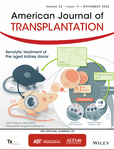
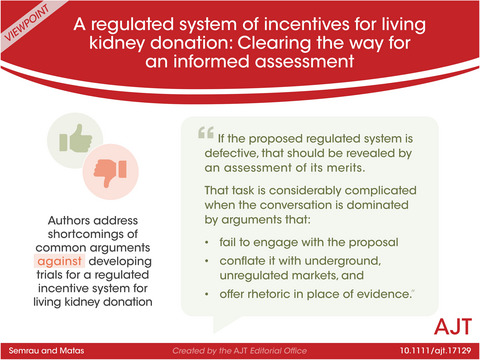

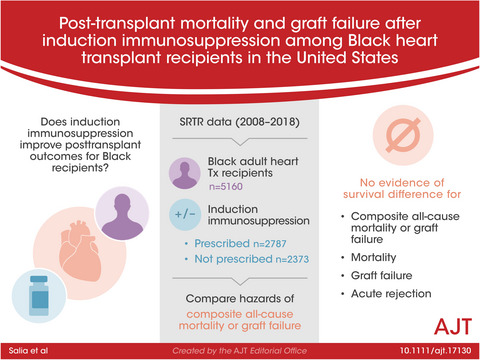
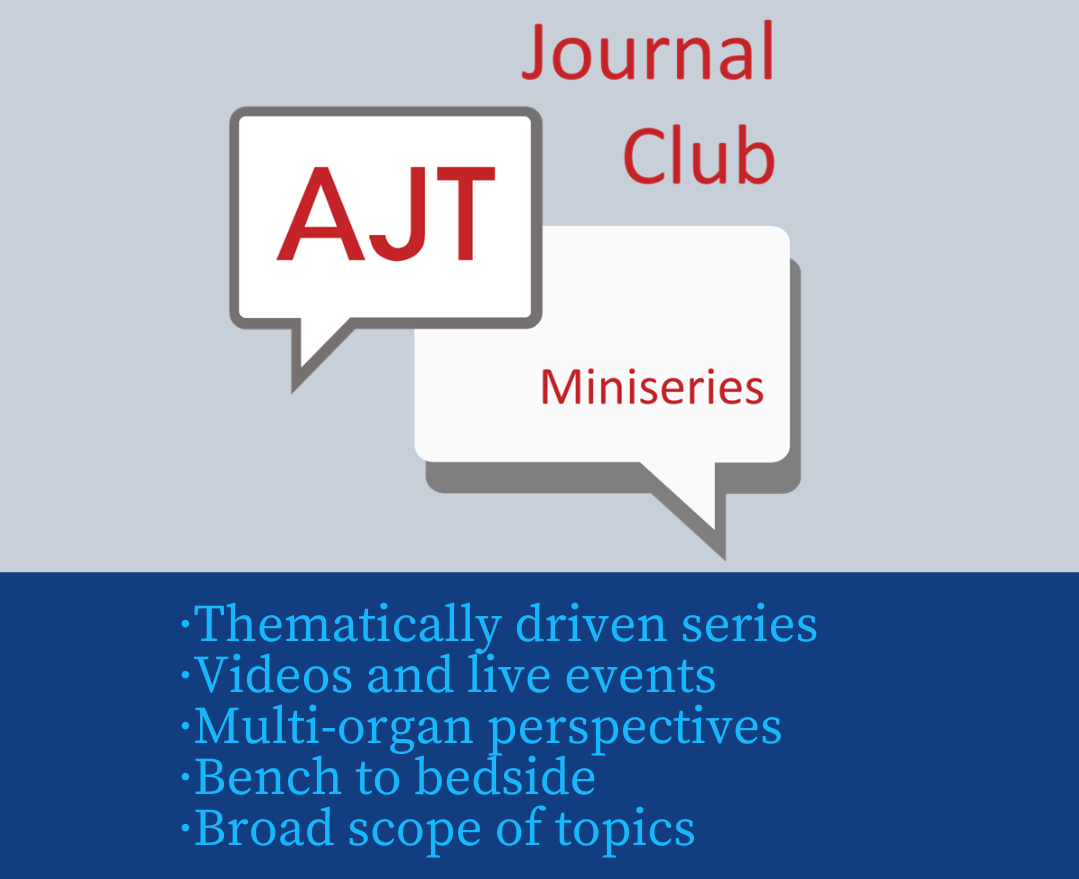


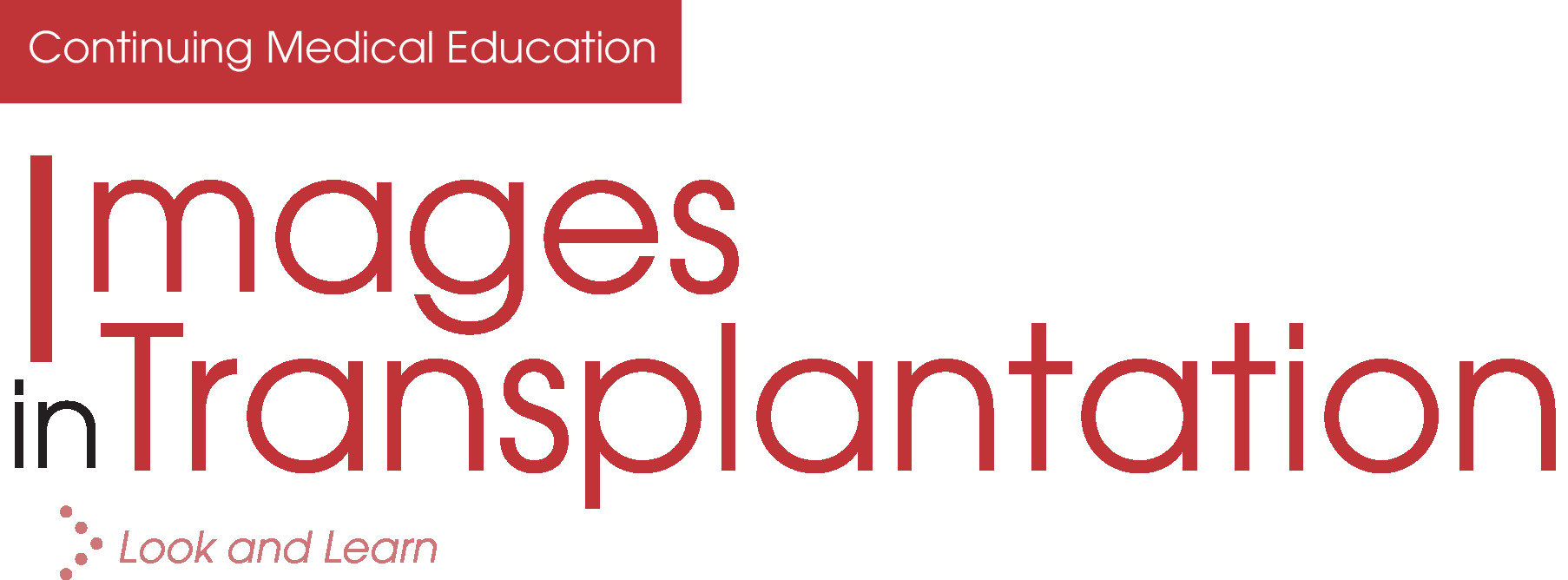
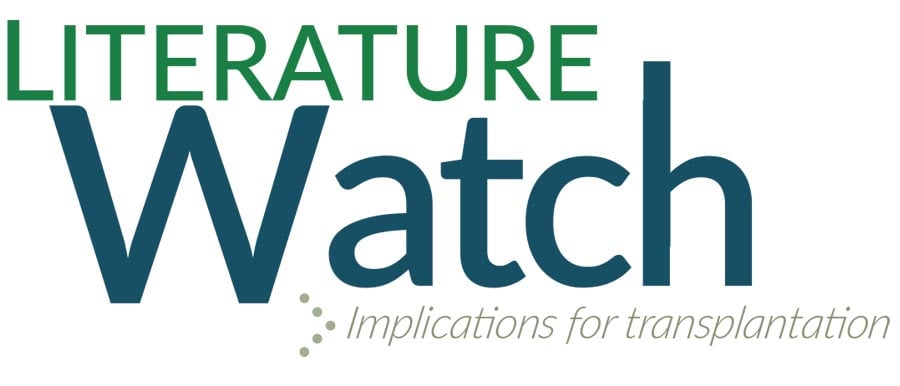
.jpg)
